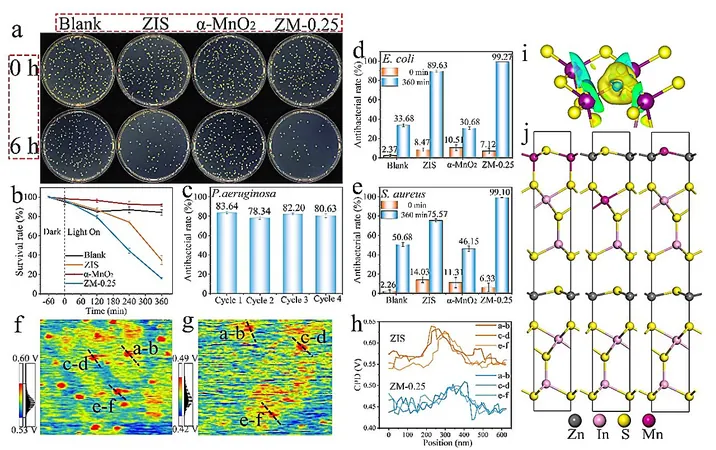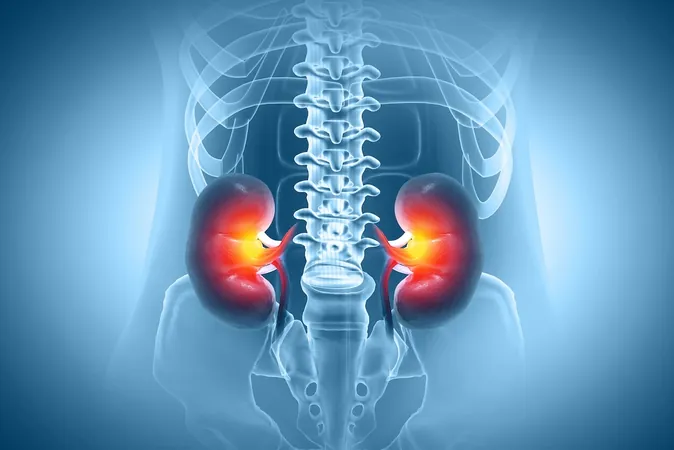
Revolutionizing Antibacterial Technology: The Breakthrough in Photocatalytic Materials
2025-06-16
Author: Rajesh
Unleashing the Power of Photocatalysis
In an era increasingly focused on environmentally friendly solutions, photocatalytic antibacterial and anti-fouling technology is making waves for its potential to tackle pollution and infection. Yet, a significant hurdle remains: the effectiveness of traditional photocatalytic materials is often hampered by inefficient charge carrier separation.
Groundbreaking Research from China's Oceanology Institute
In a pioneering study led by Professor Zhang Jie from the Institute of Oceanology at the Chinese Academy of Sciences, a significant leap has been made in boosting photocatalytic antibacterial activity. The team focused on manganese (Mn) and sulfur (Sv) co-doped ZnIn2S4 (ZIS), employing an innovative approach based on the decomposition of oxygen vacancy-rich α-MnO₂ to achieve enhanced performance, as featured in the Journal of Materials Chemistry A.
A New Method for Material Synthesis
The researchers utilized a cutting-edge solid-state decomposition technique for α-MnO₂, which is rich in oxygen vacancies. This method not only facilitates the uniform integration of manganese into the ZIS lattice but also ensures a gradual release of Mn, crucial for optimal material performance. This novel doping technique dramatically outperforms traditional methods that rely on inorganic manganese sources.
Innovative Findings on Charge Dynamics
Delving deeper, the team employed Kelvin scanning probe microscopy and density functional theory analyses to uncover crucial insights. Their findings revealed that doping ZIS with solid-state α-MnO₂ leads to a significant reduction in the material's work function. This phenomenon lowers the energy barrier, enabling photoelectrons to migrate to the surface more easily.
Transforming Photocatalytic Efficiency
Moreover, the formation of covalent bonds between sulfur and manganese plays a pivotal role in enhancing electron migration. The increased presence of sulfur vacancies significantly reduces the likelihood of photogenerated charge carriers recombining, which in turn enhances both degradation and antibacterial potency.
Conclusion: A Bright Future for Sustainable Technology
This groundbreaking research encapsulates the enormous potential of photocatalytic materials to become game-changers in the realm of environmental health. As we continue to explore and optimize these technologies, the future of antibacterial applications looks not only promising but also pivotal in our quest for sustainable solutions.



 Brasil (PT)
Brasil (PT)
 Canada (EN)
Canada (EN)
 Chile (ES)
Chile (ES)
 Česko (CS)
Česko (CS)
 대한민국 (KO)
대한민국 (KO)
 España (ES)
España (ES)
 France (FR)
France (FR)
 Hong Kong (EN)
Hong Kong (EN)
 Italia (IT)
Italia (IT)
 日本 (JA)
日本 (JA)
 Magyarország (HU)
Magyarország (HU)
 Norge (NO)
Norge (NO)
 Polska (PL)
Polska (PL)
 Schweiz (DE)
Schweiz (DE)
 Singapore (EN)
Singapore (EN)
 Sverige (SV)
Sverige (SV)
 Suomi (FI)
Suomi (FI)
 Türkiye (TR)
Türkiye (TR)
 الإمارات العربية المتحدة (AR)
الإمارات العربية المتحدة (AR)